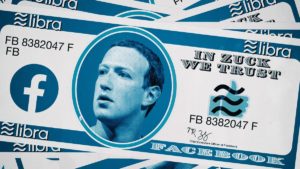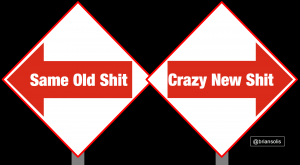Last year at SXSW, Foursquare founder Dennis Crowley joined Frank Eliason (previously @comcastcares), Altimeter Group’s Jeremiah Owyang and me on stage to discuss the shifting landscape of social engagement. While I focused on the sociology of engagement and the impact it is having on culture and society, I also sought to balance the conversation by demonstrating the impact of digital actions and interaction between people and businesses.
Whether intentional or not, Crowley and team unlocked the elusive gates that separated the last mile of engagement between local businesses and their customers and prospective patrons. The rising generation of social consumers embraced geo-location services to share physical experiences, connect with their social graph in the real world and also earn rewards for their check-ins, which is rapidly becoming a powerful form of peer-to-peer endorsements and recommendations. Crowley, quite literally gamed the system that was once solely controlled by giants such as the Yellow Pages, Google and Yelp. The Foursquare team bridged the gap between people and places both online and offline.
Later in the year, we caught up again for a cover story I wrote for Entrepreneur magazine.
We discussed how Foursquare redefined the role of the patron and the relationship between businesses and customers.
“The network started to take on a life of its own,” Crowley said in the interview for Entrepreneur. “Foursquare gave everyday people, venues and local merchants a voice. It opened the doors for businesses to see a whole new way of seeing their customer.”
In the Game of Foursquare, What’s the Score?
Foursquare’s rapid rise from New York startup to media darling is quite remarkable. If you judge the service by its badge, or shall we say badges, you might miss the bigger picture. The essence of Foursquare is powered by its community. In this mobile Utopia, people earn positions of prominence by exploring and improving the experiences of other explorers. It’s a form of social hierarchy that’s alluring and rewarding. For a more recent example, it’s not unlike the fledgling blog darling Quora. The ties that bind its users are woven through social ties and recognition that’s earned through participation and contribution.
Foursquare continues to evolve and the team recently released an infographic that visualized collective achievements and user behavior. To make it easier to consume and also appreciate its progress, let’s review some key milestones.
![]()
In 2010, Foursquare experienced 3,400-percent growth over 2009, reaching 6,000,000 users to date.

This year, Foursquare received over 380 million check-ins.

The largest swarm to date is the Rally to Restore Sanity, which saw over 35,000 check-ins on October 30th, 2010.
A Day in the Life

The team also revealed a “day in the life” of the typical Foursquare user.
Most people check-in to eateries, gaining momentum at 8 a.m. every day and thinning out just after midnight.
Check-ins to work or the office also follow a similar pattern. Work days typically seem to see the greatest volume of check-ins between 7 – 8 a.m. continuing to midnight.
Retail therapy is in session all day, racking up check-ins around 10 a.m. and winding down shortly before 10 p.m.

A few hotels have done well in the luring of check-ins.
The top hotels, in order, include:
1. Ace Hotel, New York
2. Wynn Hotel & Casino, Las Vegas
3. The St. Regis, San Francisco

Foursquare users are an eclectic bunch.
The top 3 art galleries visited in 2010 are:
1. MOMA – Museum of Modern Art, New York
2. Smithsonian National Museum of American History, Washington DC
3. Gallery of Modern Art, South Brisbane, Australia
Where did people check-in to hear live music in 2010?
The Top 3 music venues:
1. Terminal 5, New York
2. Hollywood Bowl, Los Angeles
3. Mercury Lounge, New York
With all of this checking-in, users work up an appetite and a need to quench their thirst.
The top 3 establishments for food and drink are:
1. Union Square Greenmarket, New York
2. Whole Foods, Austin, TX
3. Pike Place, Seattle

In 2010, brands also realized the opportunity to link terrestrial experiences with real world activity.
The top brands in 2010 included:
MTV – 118,370 followers
Bravo – 114,202
History Channel – 101,352
ZAGAT – 97,883
VH1 – 76,494
As Foursquare continues to attract users and check-ins around the world, consumers gain an upper hand in balance of power between patronage and magnetism. It’s a balance that venues will need to examine in order to expand their reach beyond traditional customers and even online customers. The future of relevance lies in romancing and rewarding the social consumer.
UPDATE: Per a special request by Dennis, I’ve included one last stat…

Wendy’s, the popular fast food chain, received 224 check-ins in 2010 by individuals with the name Wendy. And, one persevering Wendy’s patron in Madison, MS earned the mayorship, to become the only Wendy who is a mayor of Wendy’s.
Connect with Brian Solis on Twitter, LinkedIn, Facebook
![]()
___
If you’re looking for a way to FIND answers in social media, consider Engage!: It will help…

___
Get The Conversation Prism:








That is a too much of check-ins….Isn’t it?
The infographs are quite useful in illustrating a day in the life of Foursquare user and showing where efforts should be put by venues to leverage Foursquare to increase traffic. Thanks for that, but… it all seems shallow to me.
My million-dollar question is: why should be people care about Foursquare and other location-based social networks. I understand the original intent of Foursquare was to connect with friends when out-and-about and maybe complete with each other for points and badges, but when was the last time it was used for that?
The shine has tarnished for many users especially early-adapters. Why? I think because after you earn a badge or become mayor that’s it. There’s nothing more. I advise businesses that location-based networks have such a great potential if users are given value, a reason to check-in and keep checking in. That currently isn’t happening.
When need to stop talking fluff about location-based social networks and start talking concrete ways they can benefit users and venues.
I’d argue that we are still in the process of seeing what the real value will be (tho if someone can figure out how to monetize my long-time simmering jealousy of :”Kat” the mayor of my local YMCA– MY gym — be my guest)- and what companies can use it, which ones just never will, and the wheres and whens of applications.
For myself, I see more coupons at retail and find myself searching the different LBS’ before I make a purchase in order to take advantage. That’s an obvious value, but some of us in this bubble may be surprised to hear that it is far from fully fleshed out.
Speaking of the other vendors, at the risk of proposing a lethally lengthy tome here, I would like to hear more about FourSquare and how it fits in the ecosystem with Gowalla, SCVNGR, Where, and even the Augmented Reality apps, still bubbling much earlier on the adoption curve.
I totally agree we are still feeling our way, but I think folks, especially businesses, are afraid of the dark and many aren’t even trying. The adaption has been very slow, but rewards at retail often can be good. I check into Chili’s because I know I’m going to get my favorite treat, chips and salsa, for free. That’s motivation.
Ann Marie, you are indeed right. Chili’s is actually enjoying expanded business because of something as simple as free chips. At the same time, competing for a new, more social consumer, is indicative of the mindset need to compete for the future.
Cheers, Brian. It is amazing what a huge impact something small can do.
Hello Doug, it’s as simple as it is complicated. I’ve studied Foursquare and the sociology and psychology of the network more than I have Gowalla or any other LBS. Originally it was clear that there was something different taking place within this digital society that reminded me of the early days of Twitter.
Perhaps part of the fun here is that your questions and the questions we have yet to figure out are motivating industry pundits, businesses, patrols, and the FS team to find answers. As it was originally designed and what it is today is already different. Much like Twitter focused on community development and then the monetization strategies, FS is enjoying micro successes on multiple fronts. It’s very fascinating indeed.
What effect do you think Facebook Places will have on the continued growth of Foursquare? Will the exposure of LBS to the 600 million FB users be an advantage to Foursquare as it educates people on “check ins” or will people utilize LBS through FB because they are already taking part in so much social through Facebook?
Good questions. For me it depends on how both are leveraged to users. People have to some motivation or reward. I use Foursquare regularly for certain venues; however I’ve used Places once and that was because there was a good special only offered there. What are your thoughts?
I think FB has a bit more work to do for its 600mm+ users to understand the value and benefits of broadcasting their location. FS is doing a decent job (sorry guys, could be better) helping to educate local businesses on the advantages of luring the social consumer.
I wrote on how I value location-based tools on my blog this week and one person brought up the fact that he felt that it was spam having check-ins show up in his facebook stream. Regardless of the three points I lined out: (giving shout-outs to businesses that are doing great, sharing and experiencing in others adventures and experiences, and last the chance to meetup with friends that are near you) he still felt it was spam. Any thoughts on that? Is this a new type of spam, that of a businesses fans? With the stats mentioned above, it is obvious people like using them. I try to do most of my checkins alerting only those within my network on the tool. I only expose out my checkin to both twitter and facebook if it is something really unique (my tour of Pixar for example) Thoughts?
The adaption has been very slow, but rewards at retail often can be good. I check into Chili’s because I know I’m going to get my favorite treat, chips and salsa, for free. That’s motivation.For myself, I see more coupons at retail and find myself searching the different LBS’ before I make a purchase in order to take advantage. That’s an obvious value, but some of us in this bubble may be surprised to hear that it is far from fully fleshed out.ecommerce website developer ecommerce website development company
Speaking of the other vendors, at the risk of proposing a lethally lengthy tome here, I would like to hear more about FourSquare
I check into Chili’s because I know I’m going to get my favorite treat, chips and salsa, for free. That’s motivation.
As Foursquare continues to attract users and check-ins around the world,
consumers gain an upper hand in balance of power between patronage and
magnetism.